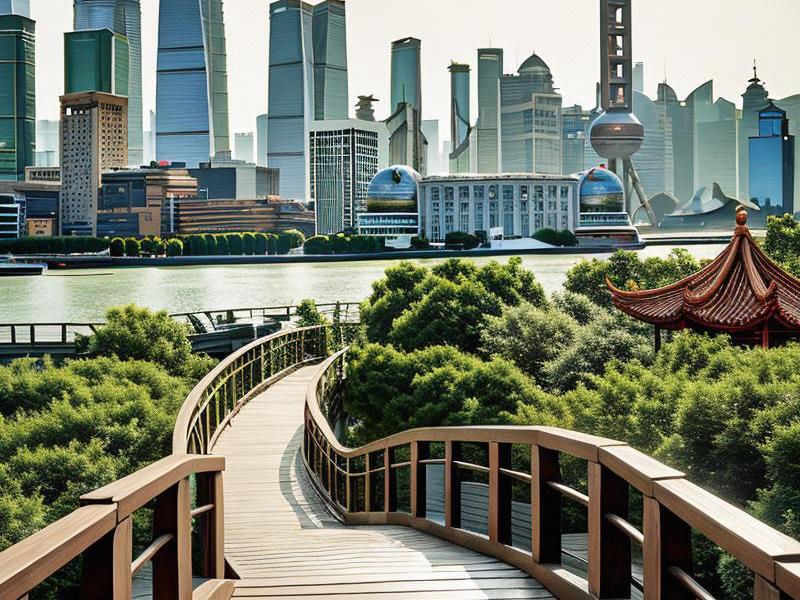Shanghai and Its Surrounding Areas: A Glimpse into the Heart of East China
⏱ 2025-05-04 14:46 🔖 阿拉爱上海千花网
📢0℃

Shanghai: The Dynamic Metropolis
Shanghai, located on the eastern coast of China, is the largest city in the country and one of the world's most influential financial centers. Known for its stunning skyline, bustling streets, and cosmopolitan atmosphere, Shanghai is a city that never sleeps.
Economic Powerhouse
Shanghai's economy is a powerhouse, driven by its status as a global trade hub. The Port of Shanghai, the world's busiest container port, handles millions of tons of cargo annually. The city is home to the Shanghai Stock Exchange, one of the largest in Asia, and hosts numerous multinational corporations and financial institutions.
Cultural Melting Pot
Culturally, Shanghai is a vibrant mix of tradition and modernity. The Bund, a historic waterfront area, showcases a blend of colonial architecture and modern skyscrapers. The city's art scene is thriving, with galleries, theaters, and music venues offering a wide range of cultural experiences. Shanghai's cuisine, known as "Shanghainese cuisine," is famous for its sweet and savory flavors, with popular dishes like Xiaolongbao (soup dumplings) and Shengjianbao (pan-fried buns).
Urban Development
夜上海最新论坛 Shanghai's urban development is a testament to its ambition and innovation. The city has invested heavily in infrastructure, including the Maglev train, which connects the city center to Pudong International Airport at breakneck speeds. The Lujiazui Financial District, with its iconic skyscrapers like the Shanghai Tower and Jin Mao Tower, is a symbol of the city's economic prowess.
Surrounding Areas: A Blend of History and Nature
The regions surrounding Shanghai, particularly Jiangsu and Zhejiang provinces, offer a fascinating contrast to the urban hustle and bustle of the city. These areas are known for their rich history, beautiful landscapes, and traditional culture.
Jiangsu Province: A Land of Canals and Culture
Jiangsu province, located to the north and west of Shanghai, is often referred to as the "Land of Fish and Rice." The province is crisscrossed by a network of canals and waterways, earning it the nickname "Venice of the East."
Suzhou: The Garden City
Suzhou, a UNESCO World Heritage Site, is renowned for its classical gardens, silk production, and traditional Chinese architecture. The city's gardens, such as the Humble Administrator's Garden and the Master of the Nets Garden, are masterpieces of landscape design that have inspired gardeners around the world.
上海贵族宝贝sh1314 Nanjing: The Ancient Capital
Nanjing, the capital of Jiangsu province, has a rich history dating back over 2,000 years. Known as the "Southern Capital," Nanjing was the capital of several Chinese dynasties. The city is home to the Sun Yat-sen Mausoleum, the Ming Xiaoling Mausoleum, and the Confucius Temple, which attract millions of visitors each year.
Zhejiang Province: A Haven of Scenic Beauty
Zhejiang province, located to the south of Shanghai, is famous for its picturesque landscapes, tea plantations, and ancient towns.
Hangzhou: The West Lake and Beyond
Hangzhou, the capital of Zhejiang province, is best known for its stunning West Lake, a UNESCO World Heritage Site. The lake, surrounded by lush hills and dotted with pavilions and temples, is a popular destination for both locals and tourists. Hangzhou is also the birthplace of Dragon Well Tea, one of China's most famous teas.
Wuzhen: A Water Town
上海喝茶服务vx Wuzhen, a historic water town in Zhejiang province, is a charming example of traditional Chinese architecture and culture. The town, with its cobblestone streets, stone bridges, and wooden houses, offers a glimpse into the lives of ancient Chinese merchants and artisans. Wuzhen is also famous for its internet culture, with the annual Wuzhen Internet Conference attracting global attention.
Natural Beauty and Ecotourism
The surrounding areas of Shanghai are also home to stunning natural landscapes and ecotourism destinations. The Taihu Lake region, located between Jiangsu and Zhejiang provinces, is one of China's largest freshwater lakes. The area offers opportunities for boating, fishing, and birdwatching, as well as scenic spots like the Three Pools Mirroring the Moon and the Yuantouzhu Scenic Area.
The Nanling Mountains, stretching across Jiangxi, Fujian, Guangdong, and Hunan provinces, provide a haven for outdoor enthusiasts. The region is known for its lush forests, waterfalls, and hot springs, making it a popular destination for hiking, camping, and spa retreats.
Conclusion
Shanghai and its surrounding areas offer a unique blend of urban development, cultural heritage, and natural beauty. From the skyscrapers and bustling streets of Shanghai to the classical gardens and serene landscapes of Suzhou and Hangzhou, the region is a treasure trove of experiences for travelers and residents alike. Whether you are drawn to the city's vibrant culture, the rich history of its neighboring provinces, or the tranquil beauty of its natural landscapes, Shanghai and its surroundings have something to offer everyone.
As Shanghai continues to grow and evolve as a global hub, its surrounding areas remain a testament to China's rich cultural heritage and natural wonders. The region's ability to balance modernity with tradition, urban development with environmental conservation, makes it a model for sustainable growth and a source of inspiration for cities around the world.
In exploring Shanghai and its surrounding areas, one can gain a deeper understanding of the dynamic interplay between tradition and modernity, nature and urbanization, and local culture and global influence. This unique blend of elements not only defines the identity of the region but also contributes to its enduring appeal and significance on the global stage.
Shanghai’s Gilded Lounges: Where Art Deco Opulence Meets AI-Curated ExtravaganceThe Great Shanghai Convergence: How the Mega-City Is Reshaping the Yangtze Delta Region"Code and Qipao: How Shanghai's Women Are Rewriting the Rules of Modern Femininity"The Yangtze River Delta Megaregion: Shanghai's Bold Vision for Integrated Urban Future《海派丽人启示录:上海女性审美变迁与都市文化演进》弄堂里的"新主人":上海城市更新中的社区共生与文化新生Shanghai's Nocturnal Revolution: How the City Redefines Luxury Entertainment《从"百乐门"到"数字包厢":解码上海娱乐会所的百年进化史》文章开始Shanghai's Beauty: A Blend of Tradition and ModernityShanghai 2045: The Living Laboratory of Urban Futurism

